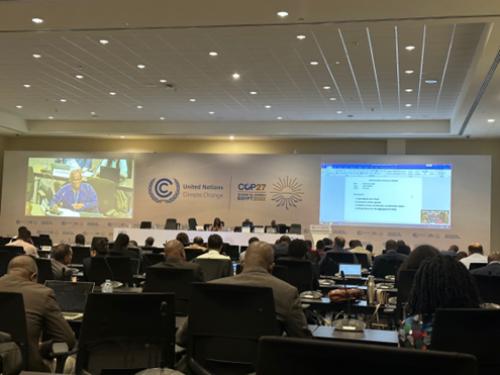Loss and Damage – the residual effects of climate change that could not be avoided or reduced through adaptation and mitigation activities – are already a lived reality for people worldwide, with around a million family members lost and over 98 million displaced and homeless. Poor and vulnerable countries and communities are the least responsible for the cause, which manifests in extreme weather events and water-related disasters1 such as cyclones, floods, and slow-onset processes such as sea-level rise.
The long-debated issue of financing Loss and Damage in the UNFCCC gained traction at COP 27 due to the inclusion of the item on the COP agenda for the first time. The inclusion of financing loss and damage as a sub-agenda under “Matters related to finance” is the icing on the cake. Those negotiating parties pursuing the inclusion of loss and damage as a third pillar in the UNFCCC, in addition to adaptation and mitigation, may not have the luxury of being delighted, sitting back, and relaxing. Concerns include the operationalising of the Santiago Network under the Warsaw International Mechanism (WIM) and the uproar over developing-country compensation claims for historical loss and damage.
The Santiago Network, also known as the WIM’s implementation wing, was established in Madrid at COP25 and given the responsibility by the Glasgow Climate Pact at COP26. It envisages mobilising pertinent stakeholders’ technical assistance to implement successful strategies for preventing, reducing, and addressing L&D at the local, national, and regional levels in developing countries that are particularly vulnerable to the adverse effects of climate change. The critical concern is why a new institutional setup, the Santiago Network, is necessary, given that the WIM already provides an institutional foundation. According to Least Developing Country delegations, the UNFCCC has historically failed to give the loss and damage issue the proper attention it requires, and Executive Committee (ExCom) in the WIM is already overburdened, finding it difficult to carry out all the activities in its work plan.
COP27 in Egypt is focusing on establishing the structure of the Santiago Network, which preferably includes the three components: an advisory body comprised of the participation from different groups, i.e. G77 and China, LDC, AOSIS etc., an organisation to host an (independent/autonomous) secretariat and a network of a broad range of organisations, and experts from all regions, providing technical assistance. The critical point of discussion in the negotiations is the advisory body’s and host organisation’s Terms of Reference, as well as the membership selection criteria. Every country party agreed on the importance of implementing the Santiago network. However, there is some debate about whether the secretariat should be an independent authority or separate from the ExCom or the UNFCCC.
After attending the initial negotiation session, I am concerned that the protracted discussion of institutional structure would cause the most crucial topic, specifically financial loss and damage, to be overlooked. The way it was overlooked in Madrid and later in Glasgow, it is much easier to debate and deliver around the institutional structure instead of agreeing on the longstanding issues of liability, compensation and finance.
After 30 years of shady distraction, this African COP, after witnessing a series of warmest years and millions of dead and homeless families in one of the world’s most vulnerable regions, is finally time to deliver on Loss and Damage. Egypt’s COP27 must work hard to establish a Loss and Damage Finance Facility to coordinate information on the need to address Loss and Damage and to provide a financing mechanism to address it. Negotiators should stop deciding who is guilty and instead focus on obtaining support for those affected from those who have the ability to do so. Support can be provided in a variety of ways, not just financially. Many other options, however, should show solidarity with those who have suffered and assist them in rebuilding resilience. In turn, those assisting may receive similar solidarity when affected, keeping in mind that climate change loss and damage is not local but rather a global catastrophe.
Santiago Network on Loss and Damage: Old wine in a new bottle?
11th November 2022
